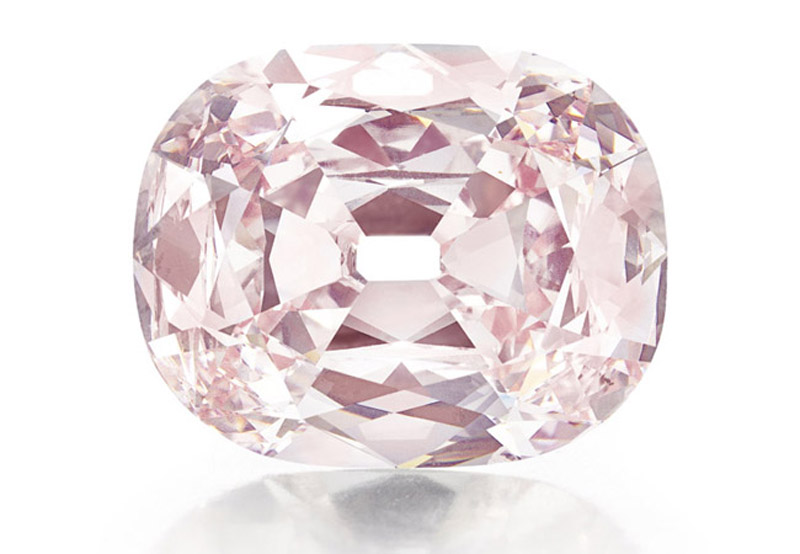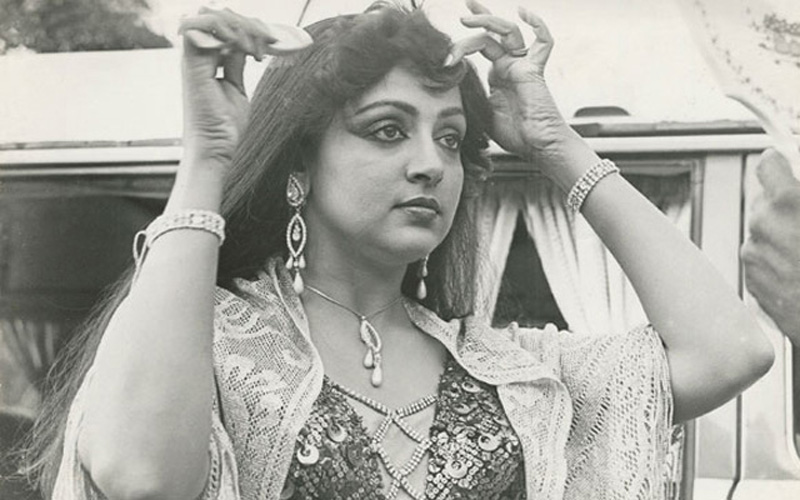Agencies
NEW YORK: The Princie Diamond, which is one of the largest pink diamonds in the world and once belonged to the Nizam of Hyderabad, has fetched nearly $40 million in auction by Christie’s in New York.
Christie’s said the diamond was sold to an anonymous collector at Christie’s, New York.
It is the most expensive diamond ever sold at auction in the US.
The 34.65 carat diamond was discovered from Andhra Pradesh’s Golconda mines about 300 years ago.
The Nizam, who was one of the richest man in the world and named the richest in 1937 by Time magazine, once owned this gem.
Rahul Kadakia, head of jewelry for Christie’s in the Americas, said, “Aside from Christie’s sale of the legendary Collection of Elizabeth Taylor, this was the most successful jewelry auction ever held in the United States and Christie’s was proud to have orchestrated the sale of such an historic gemstone.”
The diamond is named after 14-year-old prince son of Maharani Sita Devi of Baroda. Why the diamond has been named after the Baroda prince?
Well, the diamond was probably sold by the seventh Nizam of Hyderabad after his kingdom was absorbed into India in 1947. The Nizam went to live in Bombay on a pension given by the government of India. Since he retained some of the jewels and diamond, he sold this diamond to someone because of financial distress.
Later, someone sold it for $126,000 at an auction held by Sotheby’s of London in 1960. It was the first time that this diamond became known to the public. The buyer of the diamond was
the London branch of Van Cleef & Arpels which is a famous French jewelry, watch and perfume company.
When Van Cleef threw a party to celebrate the acquisition of this diamond, they invited Maharani Sita Devi of Baroda and her 14-year old son as special guests. So it was at this party that Van Cleef & Arpels decided to name the diamond after the son of Maharani Sita Devi whose pet family name was Princie. That’s how the diamond got its name.
Maharani Sita Devi of Baroda was one of the most glamorous women in Indian modern history. Known for her jet-set lifestyle and love for fine expensive jewellery, she is known the Indian Wallis Simpson. Wallis Simpson, as we know, was the American socialite whose charms made King Edward VIII of England to give up his throne to marry her in 1937. She was married twice before she married King Edward VIII.
Similarly, Sita Devi (born in Madras in 1917) and the Maharaja of Baroda Maharajah Pratapsinh Gaekwad were married when they first met at the Madras horse races in 1943.
Sitadevi, who was previously married to the Zamindar of Vayyur, immediately fell for the Maharaja of Baroda who was also happily married with four children.

So they had several hurdles to be overcome before they could be united as man and wife. The first major hurdle was for Sita Devi to get a divorce from her husband. She converted herself to the religion of Islam, and under Islamic law her continued status quo as the wife of a Hindu husband was untenable, and she was granted a divorce under Islamic Law. Having obtained a divorce under Islamic Law, she re-converted herself back to her former religion and was now free to marry her lover the Maharajah of Baroda.
The Maharajah married Sita Devi and took her to his palace in Baroda, as his second wife, but by his actions had violated the laws of his own domain and committed an act of bigamy. According to the laws of Baroda as promulgated by his own grandfather Maharajah Sayaji Rao, no one in Baroda could take a second spouse, as long as the first one was alive. The British Viceroy who was annoyed by the Maharajah’s actions in circumventing the laws of the country, summoned him and expressed his displeasure about the whole affair. The Maharajah was forced to take cover, and adduced two reasons for his actions. The first reason was that Sita Devi was an adult, unattached Hindu lady, who was free to make her own independent decisions, and the second was that the laws of bigamy applied only to his subjects, and he as the ruler was exempted from such laws. Legal advisers to the Viceroy told him that the Maharajah’s position was legally correct, and there was nothing that the British could do about it. But the Viceroy was advised not to extend recognition and protocol formalities due to her as a legal Maharani of a Princely state.
After the end of world war II the Indian Freedom Movement gathered momentum, and for the extravagant Maharajahs of India, the writing on the wall was very clear. Maharajah Pratapsinh Gaekwad, who was the eighth richest man in the world at that time, and his wife Maharani Sita Devi decided to relocate to a suitable country in Europe in order to prepare for any eventuality in the future. They selected the sovereign Principality of Monaco, the tiny territory of only 0.73 sq miles (1.9 sq km), situated along the Mediterranean coast in the midst of the resort area of the French Riviera as the most suitable site to locate their future residence. They purchased a magnificent mansion in Monaco, and Maharani Sita Devi made it her permanent residence. Following this most of the treasures of the Maharajah, which included valuable jewels and jewelry were moved from Baroda to their new residence in Monaco. Some of the well known items included the famous seven stranded natural pearl necklace, the three stranded diamond necklace incorporating the 128.48-carat Star of the South diamond, and the 76.5-carat English Dresden diamond as pendants and the famous pearl carpet.
In 1947 when India became an independent republic, Baroda decided to join the Indian Union. Officials of the Government of India took over the treasury of Baroda and were shocked to find that most of the valuable treasures were missing. They forced the Gaekwad to bring back some of the valuables, which include the seven stranded pearl necklace. But, Maharani Sita Devi refused to surrender most of the jewels. Instead she got them remounted on new settings by Van Cleef & Arpels. In 1949 Van Cleef & Arpels remounted several emeralds and diamonds into a magnificent fringe necklace called the Hindu necklace. The fringe of 13 emerald drops weighed a total of 150 carats. They also designed a pair of ear pendants, with each pendant containing a polished octagonal drop shaped emerald, suspending a 20-carat diamond briolette.
A story is also told of an interesting meeting of the two Wallis Simpsons of the east and the west at a ball in New York held in 1957, for which both had received invitations. Wallis Simpson, the Duchess of Windsor, was wearing a diamond choker studded with cabochon emeralds and rose-cut diamonds, for the party, which she had purchased recently from Harry Winston, not knowing that the same jewels had once adorned a pair of anklets worn by Maharani Sita Devi. While other guests at the party were admiring the beauty of the diamond choker, Sita Devi was heard commenting loudly that they had also looked very nice on her feet. The Duchess of Windsor felt humiliated, and on the very next day returned the necklace to Harry Winston.
The marriage of Pratapsinh Gaekwad to Sita Devi, which had a dramatic beginning in 1943, also came to a dramatic end 13 years afterwards in 1956, when the couple separated and their marriage was dissolved. In 1968 Pratapsinh died in exile in London, and Sita Devi spent her remaining years with only her son Princie for companionship.
As time passed Sita Devi’s glamour and riches faded. Her son Princie’s behavior also became a source of serious concern and worry for her. The lad perhaps due to forceful isolation picked up the wrong values from the society which he was thrust into by his mother. He became a chronic alcoholic and drug addict, which eventually led to his suicide by slitting his throat in May 1985. Sita Devi was unable to reconcile to the loss of her beloved son which became something too great for her to bear up. Not long afterwards in 1986, Sita Devi died in Neuilly-sur-Seine, in France. Without any doubt in the history of India, Sita Devi remains as the most flamboyant Maharani. (With input from internetstones.com)
RELATED: At $236 billion, Nizam of Hyderabad was the richest Indian ever








